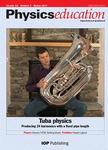版权所有:内蒙古大学图书馆 技术提供:维普资讯• 智图
内蒙古自治区呼和浩特市赛罕区大学西街235号 邮编: 010021

作者机构:Physics Department Stellenbosch University Matieland Stellenbosch 7600 South Africa
出 版 物:《Physics Education》 (Phys. Educ.)
年 卷 期:2017年第52卷第4期
页 面:1-1页
学科分类:0402[教育学-心理学(可授教育学、理学学位)] 0401[教育学-教育学] 07[理学] 0805[工学-材料科学与工程(可授工学、理学学位)] 0704[理学-天文学] 0702[理学-物理学]
主 题:Science Instruction College Science College Students Scientific Concepts Electronics Teaching Methods Standardized Tests Foreign Countries Physics Knowledge Level Pretests Posttests Computer Oriented Programs Educational Technology Technology Uses in Education Program EffectivenessSouth Africa
摘 要:Probing university students understanding of direct-current (DC) resistive circuits is still a field of active physics education research. We report here on a study we conducted of this understanding, where the cohort consisted of students in a large-enrollment first-year physics module. This is a non-calculus based physics module for students in the life sciences stream. The study involved 366 students enrolled in the physics (bio) 154 module at Stellenbosch University in 2015. Students understanding of DC resistive circuits was probed by means of a standardized test instrument. The instrument comprises 29 multiple choice questions that students have to answer in ∼40 min. Students were required to first complete the standardized test at the start of semester (July 2015). For ease of reference we call this test the pre-test. Students answered the pre-test having no university-level formal exposure to DC circuits in theory or practice. The pre-test therefore served to probe students school level knowledge of DC circuits. As the semester progressed students were exposed to a practical (E1), lectures, a prescribed textbook, a tutorial and online videos focusing on DC circuits. The E1 practical required students to solve DC circuit problems by means of physically constructing circuits, algebraically using Kirchhoff s Rules and Ohm s Law, and by means of simulating circuits using the app iCircuit running on iPads (iOS platform). Each E1 practical involved ∼50 students in a three hour session. The practical was repeated three afternoons per week over an eight week period. Twenty three iPads were distributed among students on a practical afternoon in order for them to do the circuit simulations in groups (of 4-5 students). At the end of the practical students were again required to do the standardized test on circuits and complete a survey on their experience of the use of the iPad and iCircuit app. For ease of reference we refer to this second test as the post-test. Th